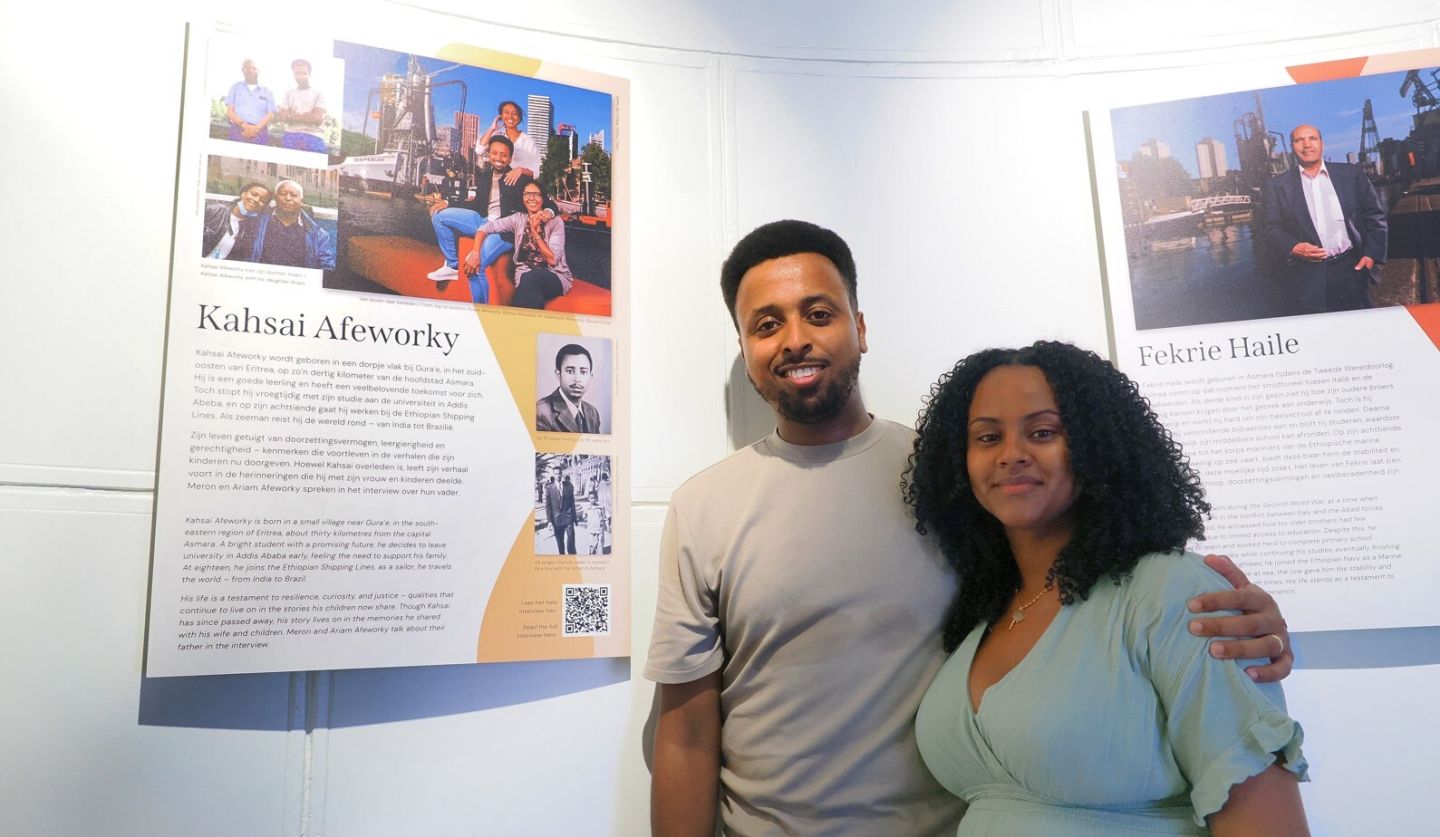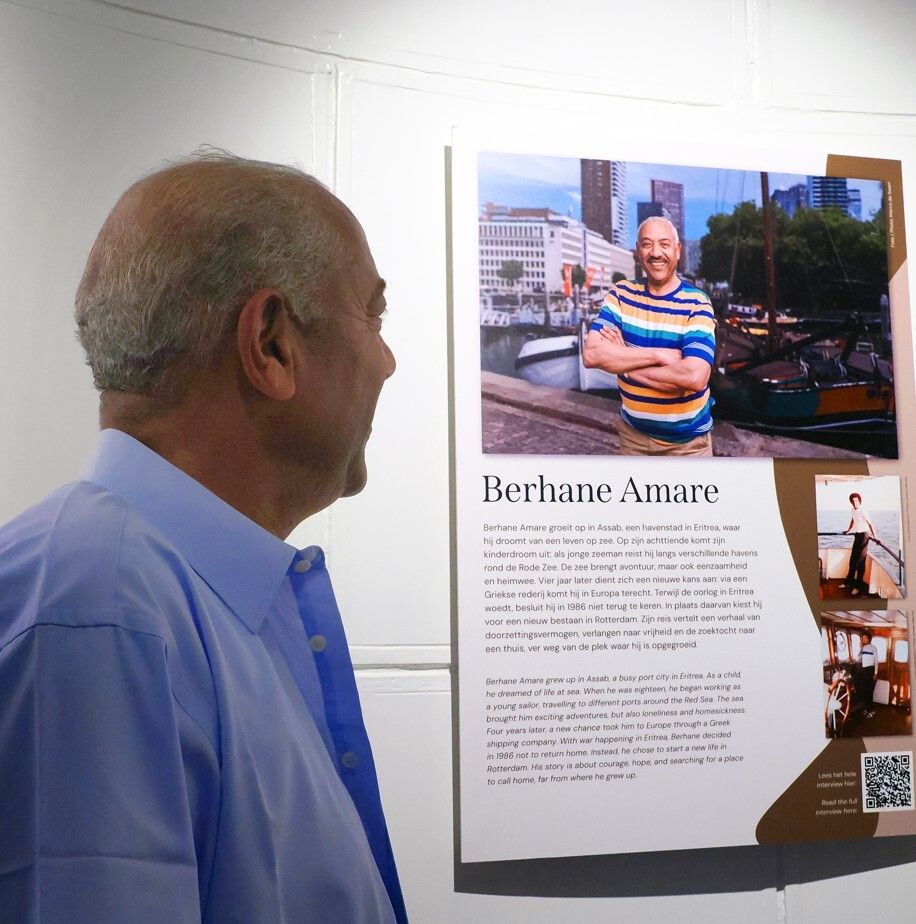
Seafarers: The first bridge builders
Throughout history, it is often seafarers who arrive first in unfamiliar lands. They quietly lay the groundwork by building networks, opening doors, and becoming the first link in what will grow into entire communities.
The same is true for the Netherlands. In the 1960s and 70s, the first Eritreans didn’t arrive through refugee routes, but they came as crew members aboard international ships, in docking in ports like Vlissingen and Rotterdam.
- What brought them here?
- What journeys lay behind them?
- And how did their personal search for safety become the foundation for a wider community?
Eritrea’s maritime legacy
To understand their stories, we must look back to the Red Sea coastline, where Eritrea has, for centuries, stood at the crossroads of trade, travel and cultural exchange.
Long before today’s migration movements, ancient Adulis now an archaeological site, was a key port in the Aksumite Empire, linking trade between Africa, the Middle East, India and the Mediterranean between the 4th and 7th centuries. Gold, ivory, silk, salt and ceramics flowed through these harbours and with them came stories, languages and ideas.
In the centuries that followed, Eritrea’s coastline remained of strategic importance. The medieval Kingdom of Medri Bahri controlled much of the Red Sea corridor, forming strong trade ties with Arab, Ottoman and European powers. Massawa and Assab emerged as vital economic and military hubs, staffed by Eritrean seamen, port workers and traders. Some crossed oceans freely; others did so under colonial oppression.
From the 16th to 20th century, control of these ports shifted from Ottoman to Italian hands, then to Ethiopia, and finally to an independent Eritrea. But one thread remained unbroken: the Eritrean seafarer as builder, navigator and connector.
Rotterdam as a new beginning
In the 20th century, under Ethiopian rule, many Eritreans were recruited into the Ethiopian Navy or Shipping Lines. For some, these posts became escape routes. Amidst war, forced conscription and political repression, a quiet few chose not to return.
And so, the first Eritrean seafarers arrived in the Netherlands not with suitcases full of possessions, but with skills, experience, and the hope of starting anew.
This exhibition shares the voices of Berhane Amare, Kahsai Afeworky and Fekrie Haile — men who travelled the world by sea but ultimately dropped their anchors in Rotterdam. Their stories speak not only of courage, but of loss, longing, and the search for a new home.

From the shadows of the sea to a thriving community
The earliest Eritreans in the Netherlands were seafarers, freedom fighters, students and workers. By the 1980s, larger waves of refugees followed fleeing war and searching for a better life. Many brought their families, seeking safety, stability and opportunity.
Today, the Netherlands is home to around 28,000 Eritreans. Some were born here; others grew up between cultures. What unites them is a shared history and a collective identity rooted in resilience.
Stichting Gezana
This exhibition was created in collaboration with Stichting Gezana, an organisation that carries the spirit of those early pioneers forward.
“Gezana” means “Our Home” in Tigrinya and that’s exactly what it is: a welcoming space for Eritreans, as well as Somali, Ethiopian, Sudanese and Dutch visitors. A place to join in for a meal, get help with paperwork, follow a class or simply feel at ease.
From Dutch language courses to parenting support, from women’s coffee gatherings to the KansenBank community project, Gezana is where futures are built on the strength of a shared past.
Why this exhibition? And why now?
The history of Eritreans in the Netherlands didn’t begin in asylum centres it began at sea. These are the stories that too often go untold. Stories of men who travelled with calloused hands and salt in their hair, searching not just for land, but for freedom.
The Journey to Freedom gives them a voice and a place in our collective memory.
This exhibition invites you to meet three of the first Eritreans to settle in the Netherlands. Step into their shoes, listen to their stories and follow their journeys.
And ask yourself: What does it mean to find home, when you’ve come from so far away?
Curious to learn more?
Come visit Stichting Gezana — for a warm cup of coffee or a fresh plate of injera and experience what it feels like to truly come home.
- 📍 Stichting Gezana – Rotterdam West
- 📩 info@stichtinggezana.nl
- 🌍 www.stichtinggezana.nl
'More than a community centre. It feels like home.'